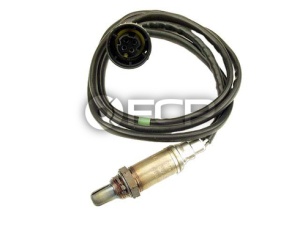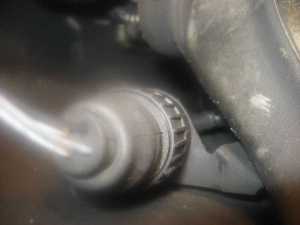Over the holidays I had an idle and running issue. The car displayed a irratic or hunting idle, hesitation on acceleration between 800-1500, and was throwing a CEL. I went through all the normal procedures to diagnose the issue, finally discovering my O2 sensor was causing the trouble. Knowing how to read and interpret DME codes enabled me to diagnose and repair this issue in short order.
The stomp test
Most emission issues which are monitored via DME or ECU will throw a check engine light or CEL. I say most, as in some cases the car will not throw a CEL. When a CEL is present this indicates that the DME system has reported an issue and recorded it for diagnosis by way of a code. This is unlike later model BMWs, which require a computer or scanner to read and clear the codes. On earlier models this is not necessary.
The "stomp test" usually works for all BMW models years 1988- 2001. To perform the stomp test, turn the key to start position. Do not start car. Quickly press to the floor and release the accelerator pedal 5 times, activating the stomp test. The CEL light will then begin to blink in a sequence or pattern ie: 1-2-2-1. These series of blinks and pauses are the DME codes which were recorded. The sequence will continue to blink until you look to see if there are any other codes. While the first code is blinking, press and release the accelerator pedal 5 times like before. This should interrupt the first code. The CEL light will light up, stay on for 5-10 seconds then go out. Once it goes out it will begin to display a second code sequence. Keep repeating process till there are no more codes. When all the codes are finished, the CEL will flash once, or it will flash in a 1-4-4-4 pattern to state all codes are clear.
DME Codes
Some of the codes the DME can record:
 1211 DME Control Unit
1211 DME Control Unit- 1215 Air Mass Sensor
- 1216 Throttle Potentiometer
- 1218 Output Stage, Group 1
- 1219 Output Stage, Group 2
- 1221 Oxygen Sensor 1
- 1212 Oxygen Sensor 2
- 1222 Lambda Control 1
- 1213 Lambda Control 2
- 1223 Coolant Temperature Sensor
- 1224 Intake Air Temperature Sensor
- 1225 Knock Sensor 1
- 1226 Knock Sensor 2
- 1227 Knock Sensor 3
- 1228 Knock Sensor 4
As you see in the list the code for O2 sensors are 1221, 1212 (for those with two O2 sensors). Receiving one or both of these codes indicates it's time to inspect the O2 sensor.
Inspecting the O2 Sensor
After doing the stomp test my car produced a 1221 code. This indicates the O2 sensor is not reading correctly. While great information, it's general. It doesn't necessarily mean the O2 sensor is bad. The sensor could be disconnected or have a break in one of the four wires inside of the harness, making it difficult for the DME to monitor emissions. Inspect the O2 Sensor and the harness connection. Some cars are easier to locate the round O2 sensor connection than others. Considering you'll be elevating the car to inspect the O2 sensor also. It's would probably be best to try and kill two birds with one stone. Once the car is properly lifted and secured on stands, locate the O2 sensor then trace it back into the engine compartment for the connection. If there are no breaks in the wiring and/or the O2 connection is snug then the culprit truly is the sensor.
Make sure you have a can of PB Blaster
Removal of the O2 sensor isn't very time consuming or difficult. You will need a specialty O2 sensor socket tool and a socket wrench to remove the old O2 sensor. Make sure you have a can of PB Blaster to help free a seized sensor, and replace the O2 sensor with the correct replacement. Once the old sensor is out and the new sensor is in, the car will be back to normal.












